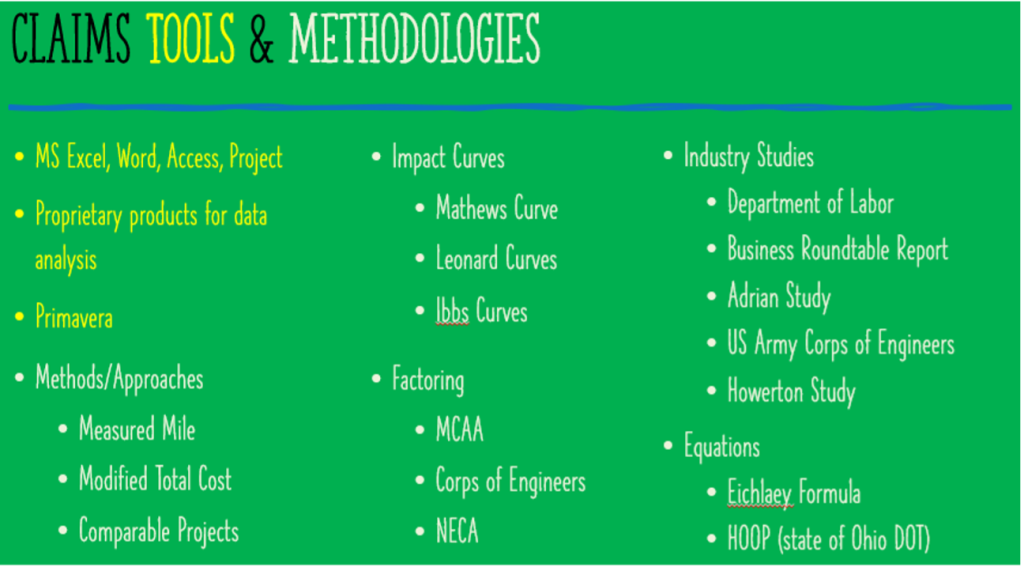Executive Summary
Construction claims are generated using many tools and many different methodologies. Read here to learn some of the basic to intermediate approaches.
What’s a claim?
A construction claim is a request made by a Contractor usually asking for time and/or money as it relates to a particular matter on a job. The word claim usually comes into play when the Project Owner has denied all other requests by the Contractor.
How much preparation goes into a claim?
Usually by the time a claim arises, the matter has become contentious, and the Contractor must prepare for a fight. It is this point in time when the Contractor begins preparation of a mediation- or court-ready document. The answer to the question at the beginning of this paragraph is that the preparation can be extensive.

Claims Tools
The tools for claims are softwares most people know: Microsoft Office products, Oracle Primavera P6, and even some proprietary products. The goal of any tool, especially a tool which presents a final request for time or compensation, should be based on applicability and simplicity. An overly complex tool will confuse an issue – and keeping claims simple stupid (K.I.S.S. concept) should always be top of mind.
Claims Methodologies
The chosen methodology should be one, or a combination of more than one, that credibly quantifies a loss. Each of the methodologies in gray font above represent calculation methods used in the determination of financial damages.
Here is commentary on some of these methods:
- Measured Mile – this is likely your strongest offense in a claim. If you can prove that your pre-impacted production was “x” and now the impacted production is 0.6 * “x”, you have solid claim.
- Modified Total Cost – this method is also strong and involves the accounting of financial loss from a well-documented impact. The legitimacy of the claim is realized in the Contractor’s admittance of self-induced damages. So, the claim becomes an ask for “x” dollars less “the impact I caused myself”.
- Comparable Projects – this method is used when a measured mile cannot be established on this project, but a similar installation was done elsewhere and is deemed by the Contractor to be comparable to this one.
- Impact Curves – these curves are established by data collected on other projects related to financial or productivity loss. Be very careful with this tool, and any other, to ensure that the data is applicable to your issue. Misapplying data can be detrimental to your claim.
- Industry Studies – similar to the discussion immediately above, these studies are collections of data; make sure they’re applicable!
- Equations – the equations listed above relate to overhead costs. The equations are simple, but usually only represent a starting point in negotiations. Check your contract to see if it allows for overhead reimbursement.
My Story

The graphic used above was an excerpt of a presentation I recently made to a software company looking to generate a claims software. I’ve used these tools and methods myself or have had someone use them against me or my client.
These claims tools and methodologies are no different than what’s in your Knaack Box out in the field in that you must chose the right tool for the right job. You wouldn’t use a hammer to drive a screw! Same applies here, you must find the right tool and method to get the job done.






0 Comments